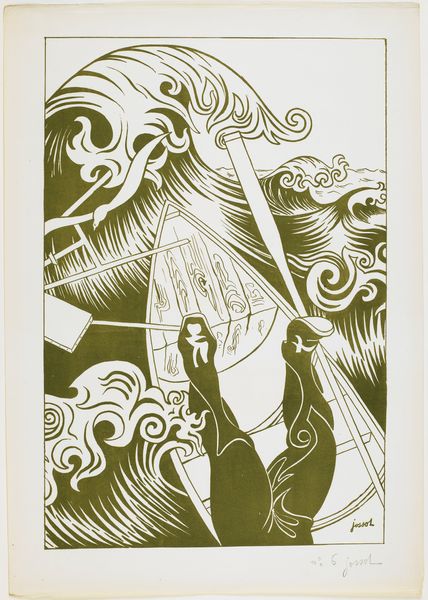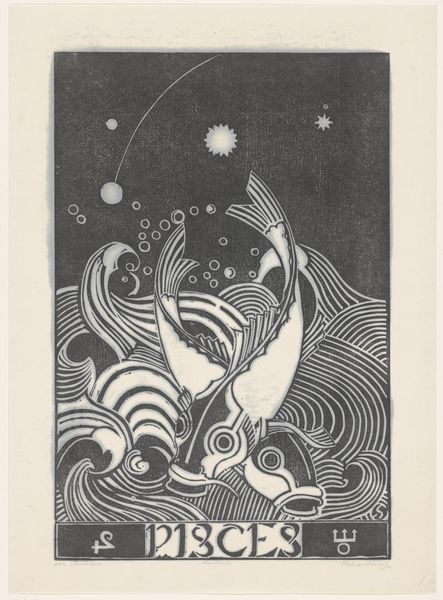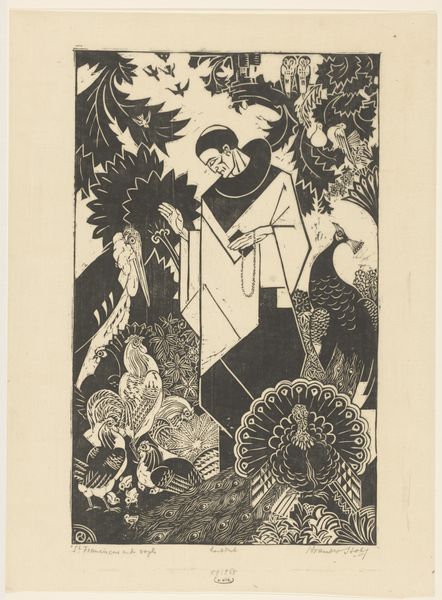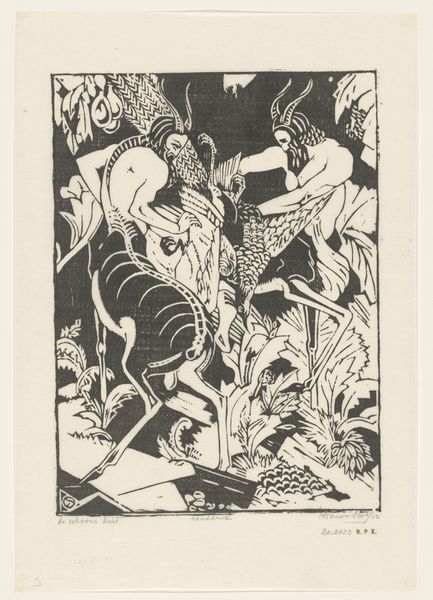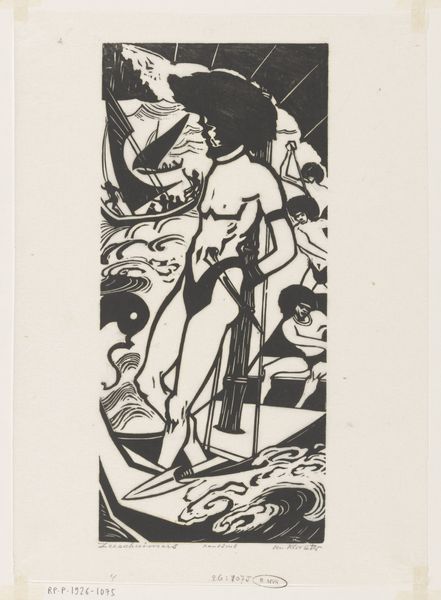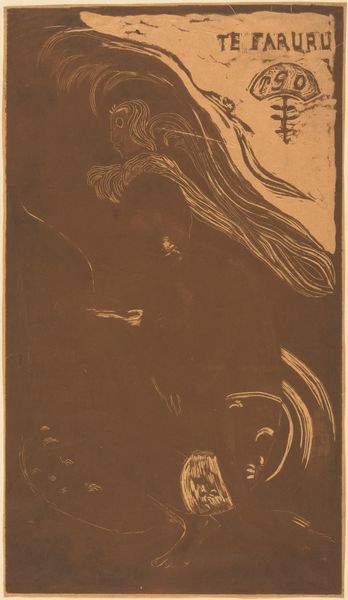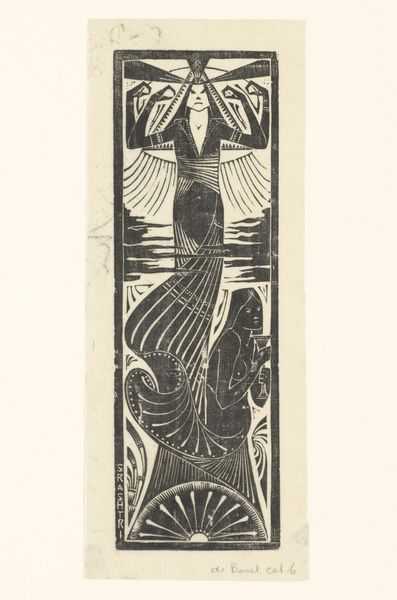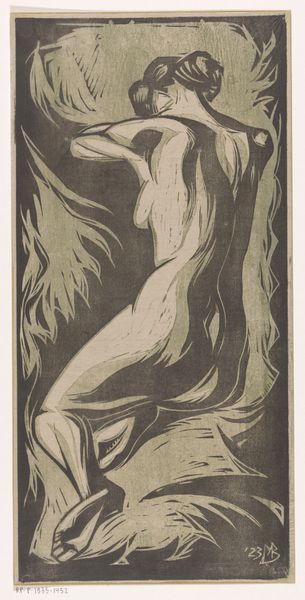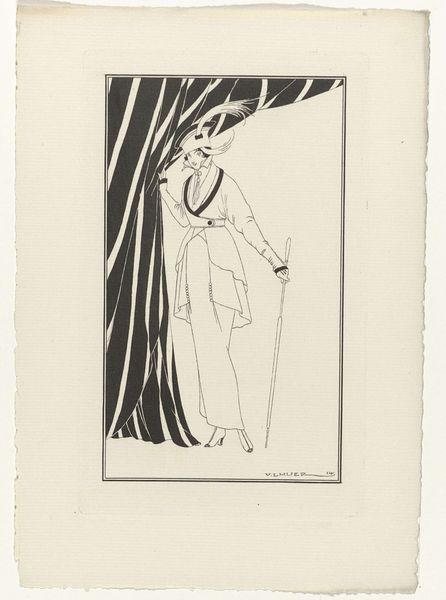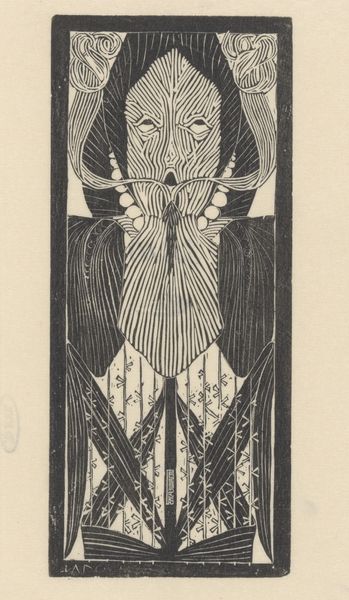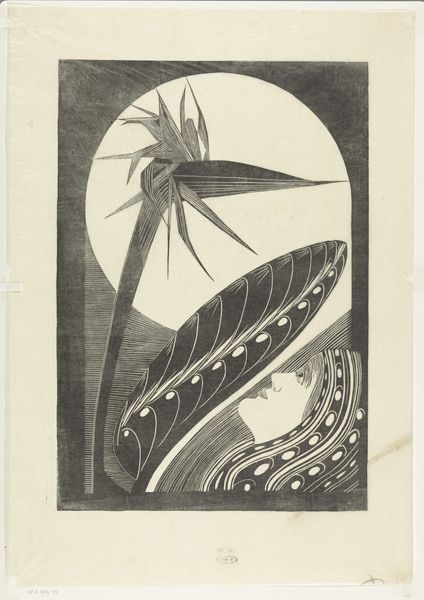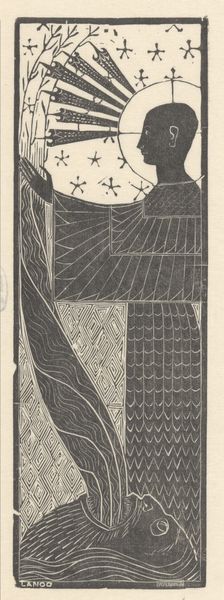
drawing, lithograph, print, linocut, paper, ink
#
drawing
#
narrative-art
#
lithograph
#
linocut
# print
#
linocut
#
landscape
#
figuration
#
paper
#
ink
#
symbolism
#
post-impressionism
Dimensions: 610 × 430 mm (sheet)
Copyright: Public Domain
Henri Gustave Jossot made "The Wave" as a lithograph printed in olive green ink on paper. Lithography allows for detailed reproduction because the image is drawn on stone or metal with a greasy crayon, then chemically treated so that ink only adheres to the drawn areas. The nature of this process lends itself to bold outlines and flat planes of color. See how the monochrome palette emphasizes the graphic quality, turning the tumultuous scene into a striking visual pattern. The texture is inherently smooth, but Jossot varies the line work to suggest depth and movement within the wave, the boat, and the bodies. This printmaking technique democratized art production, and in doing so, artists like Jossot made art more accessible to a wider audience beyond traditional painting or sculpture. Consider how the material qualities of lithography—its capacity for mass production and graphic clarity—contributed to the circulation of this image and its message. It prompts us to look beyond the subject matter of the artwork and appreciate the significance of its making.
Comments
No comments
Be the first to comment and join the conversation on the ultimate creative platform.
